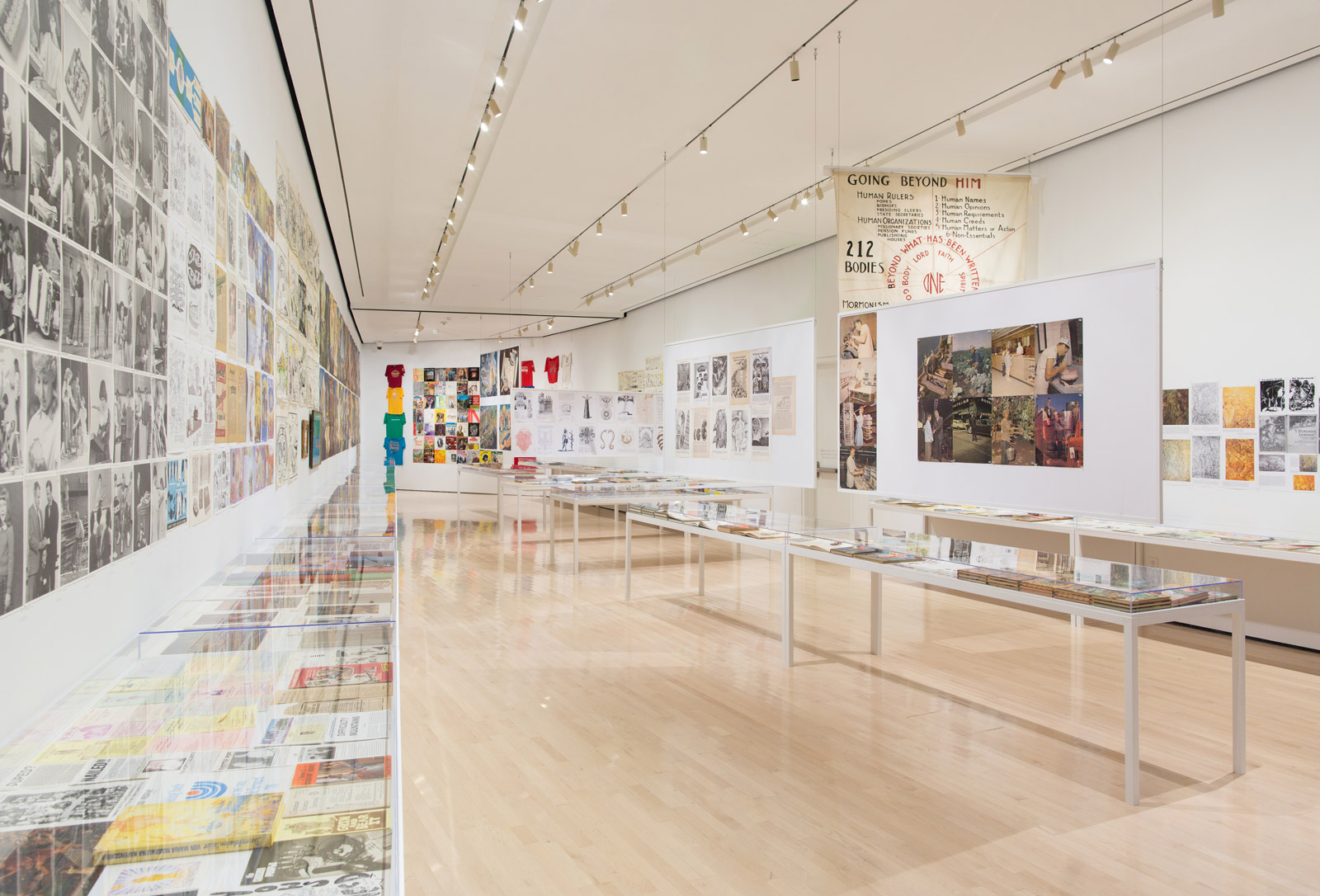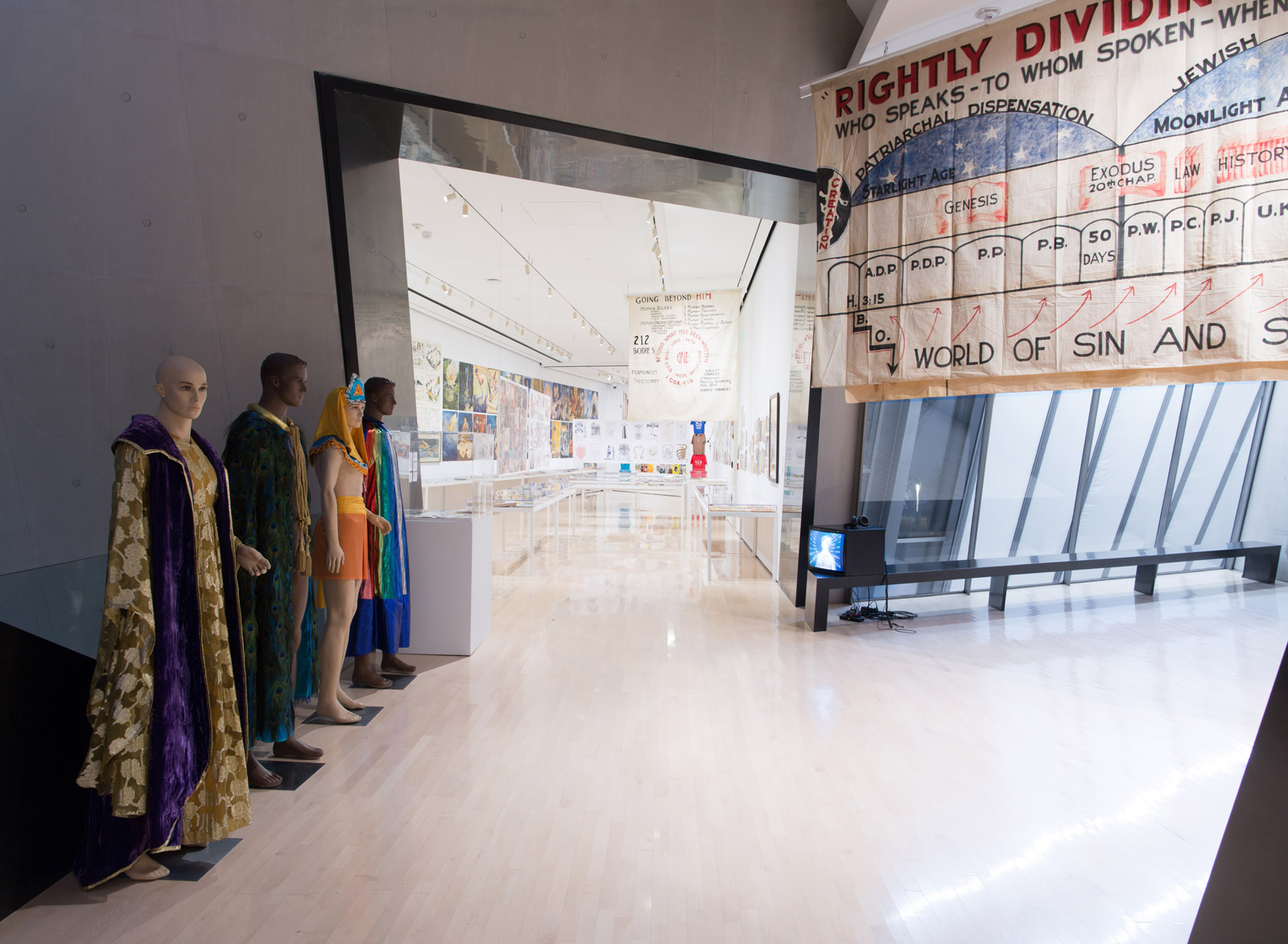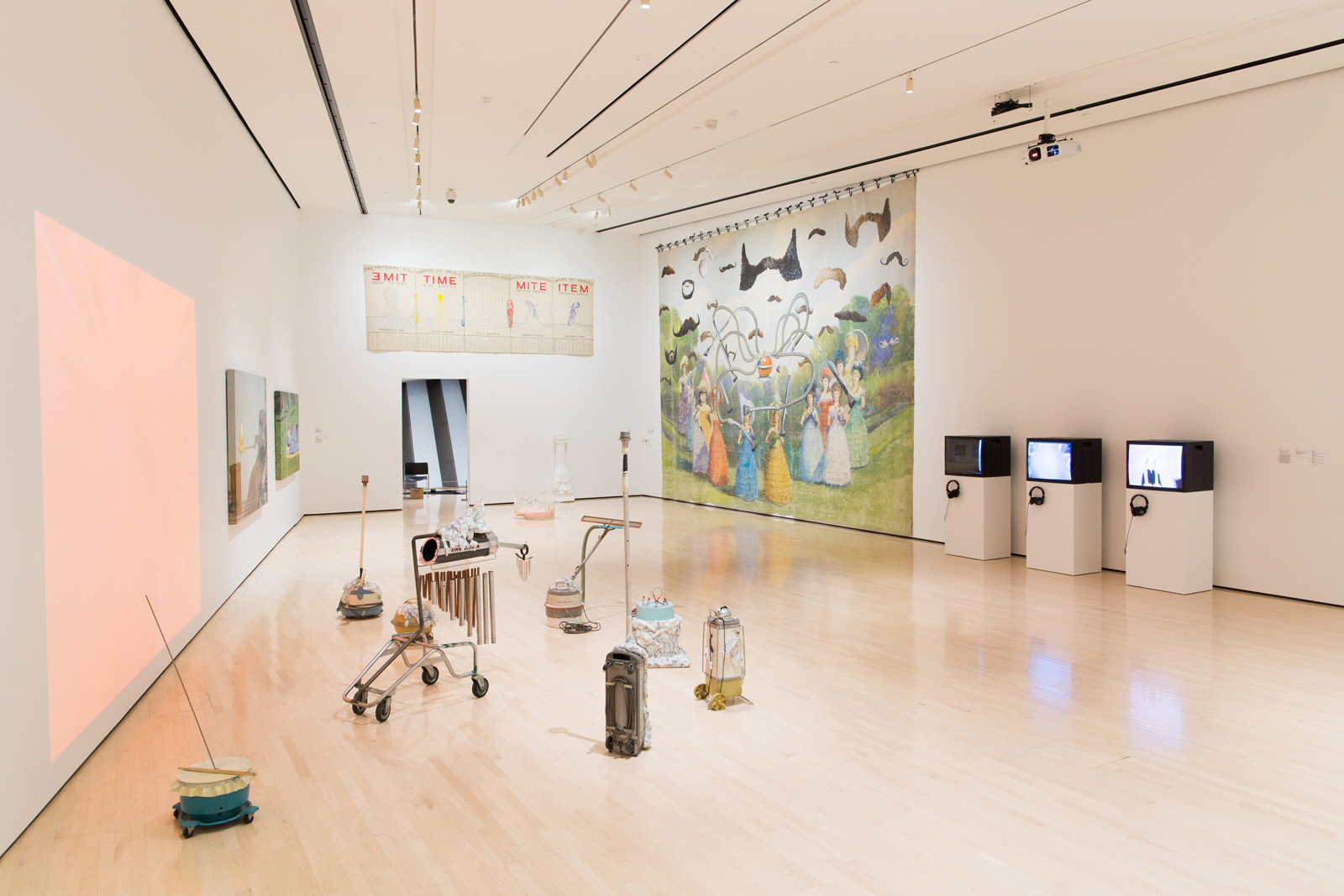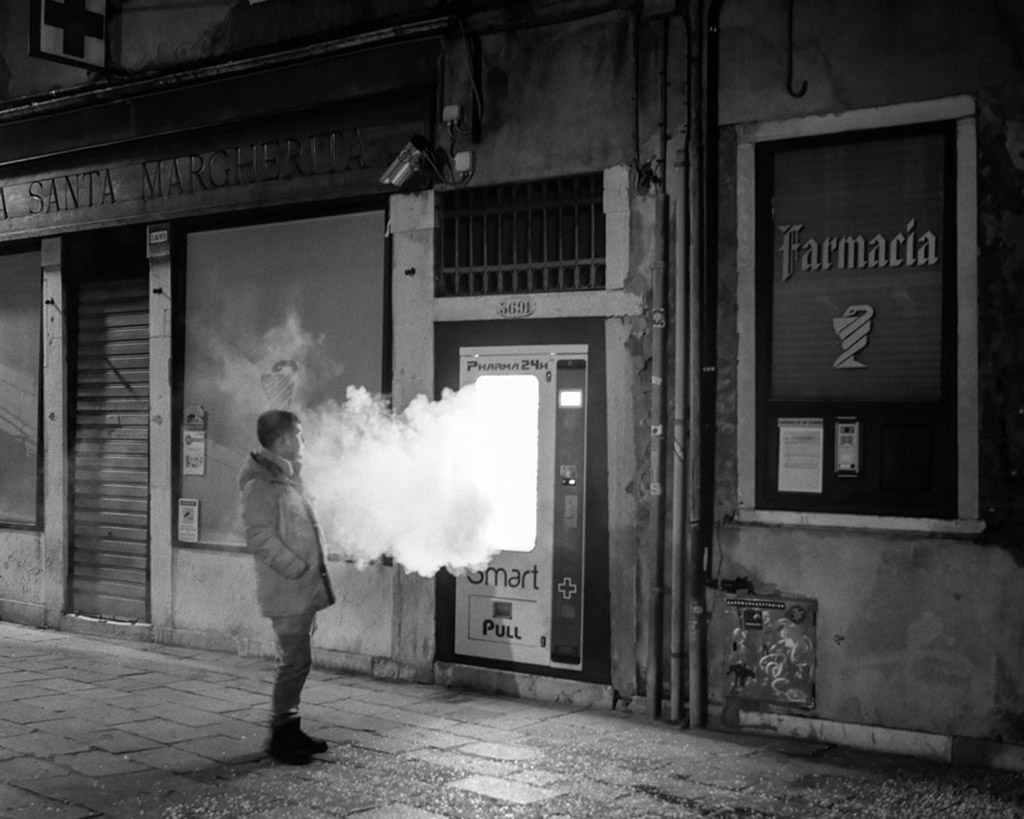Jim Shaw + Mike Kelley’s “Michigan Stories” Exhibition at MSU Broad
Two worlds of beautiful chaos collide in the Zaha Hadid-designed museum

Long before revealing The Broad Museum, LA to the world, Eli and Edythe Broad commissioned the Broad Art Museum at Michigan State University. Its location in suburban East Lansing may be the only reason the facility doesn’t have name recognition like its younger sibling. Zaha Hadid designed the stunning, angular building; curator Marc-Olivier Wahler spent time at the Swiss Institute in NYC and was the director of Palais de Tokyo, Paris; artists range from Maurizio Cattelan to Duane Linklater—in other words, globally recognized names. Last week “Michigan Stories” was unveiled and it’s the first time ever artists Jim Shaw and Mike Kelley—who met a few towns away as college students at University of Michigan—are exhibited together in a parallel life-spanning retrospective. Within, one finds dream drawings and objects, many representing something so familiar and yet alien. There are theater backdrops and mechanical toys. The show captures and chronicles traces of tactile paraphernalia and the dreams they represent in a mind-bending way. Now, perhaps more than ever, this Broad warrants a visit.

Shaw was present for the exhibition’s opening night, and he also performed for the first time since 1976. There are over 40 years worth of Shaw’s art on the walls, but it doesn’t phase him. “I’m usually more concerned with the stuff that I’m about to make rather than the stuff I made in the past,” he explains to CH. “Some of the objects on display, I do think, ‘Maybe I should buy that for myself’ because it’s all actually going to be in the collection of the museum,” he adds. “But then, it’s been in storage for a while anyway.”

The exhibition’s most tantalizing room happens to belong solely to Shaw’s work and it’s called “The Hidden World.” Here, pieces he’s collected over decades are on display, linked thematically. In essence, his skill at collecting and organizing is the art. When seen in person, it simply makes sense, and the level of attention to detail (and organization, as Shaw oversaw install personally) is absurd. The room is also funny. “I guess anal retention is the main thing,” he says regarding the specificity of it all. “If I see something weird, I am interested in it. This represents the past, though. In the present, this same sort of information is going out on the internet.” By this he means much of the materials in his collection are religious propaganda items, or cult recruitment items—some incredibly rare and many entirely baffling.

More than contemporaries, Shaw and Kelley were in the same art-rock (or anti-rock) band, known as Destroy All Monsters. Together with Cary Loren and artist Niagara, they were making group pieces—and promotional items—as far back as ’73. “Mike’s not here to represent himself,” Shaw adds. “I’m not sure if he would be a spare [tire] in his rooms. Mike disowned a lot of the stuff he did in Michigan and I sold a lot of the stuff I did here. You have to have an in gathering of stuff that’s already left your hands.”
In some ways I am getting more radical as I get older because I am afraid we are heading into a very dark time
Many of the pieces from the Kelley estate have to be listed as archival works and not art pieces. This isn’t because of quality, many are absolutely stunning and delightfully eccentric; it’s because Kelley’s personal opinion of things shifted. That said, one cannot help but feel that the punk-ish, anti-authority messaging of Destroy All Monsters is relevant once more. “We were a bunch of kids,” Shaw continues, “Some things are embarrassing. In some ways I am getting more radical as I get older because I am afraid we are heading into a very dark time. When I look back at the earl ’70s, that was a very dark time too. Manson, Nixon and a population experiencing depression.” Costumed, theatrical and bold, the video works at the Broad emphasize the experimental and collaborative nature of both artists as they were beginning.

“I started to work with Jim Shaw at 2002, when I was at the Swiss Institute in New York,” Wahler explains to CH. “Two years later, I saw the Mike Kelley ‘Uncanny’ show in Europe. For me, these two experiences, Shaw’s archival materials—things you almost cannot consider as artwork but by a very talented artist—it’s something that you have to take a stance on and Kelley’s work was something that when I went out of the show I felt he had done everything I had always wanted to do.” Wahler sought out their Michigan stories for the show specifically—from early works to recent pieces on repressed memories. “Their experience in Michigan shaped their way of working, their references, their vision. It was totally obvious. They started with the same type of vocabulary and it was interesting to see how they both evolved,” he concludes. Strolling the magnificent gallery spaces, either shared or dedicated to a singular artist,
supports this completely.
“Michigan Stories” runs now through 25 February 2018.
Images courtesy of the Eli and Edythe Broad Art Museum at MSU












